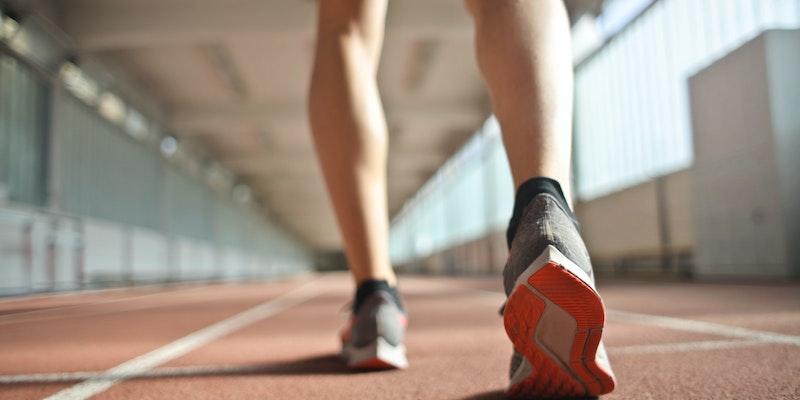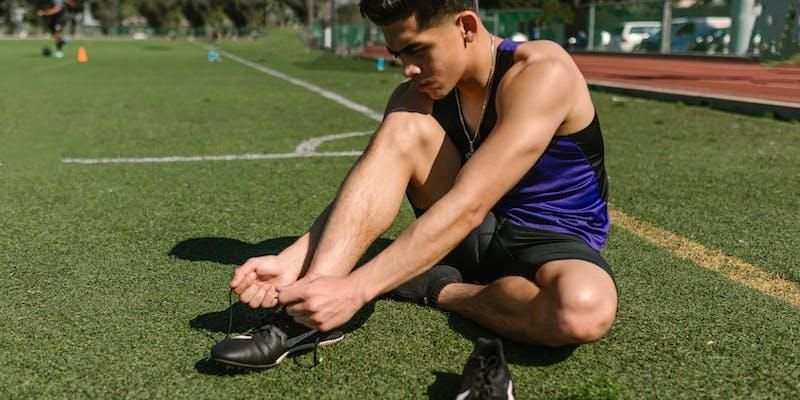Your feet and ankles will benefit in various ways from wearing sport-specific shoes. How? Comfort and efficiency can be improved with sport-specific footwear. Regular strength training and the correct athletic shoe help prevent sprains, stress fractures, and tendonitis.
Sports injuries frequently involve the foot and ankle. Doing the same exercise repeatedly strains your feet and legs, so you need shoes that can withstand the punishment and let you move freely.
Consider how frequently you practice your sport or other sports if you exercise. To perform well and avoid serious injuries, you may need sport-specific shoes. You don't need shoes designed specifically for each sport you play occasionally. Consider switching to cross-training shoes instead.
How To Choose Running Shoes

To get the best fit, keep the following points in mind:
Arch and Form of Your Foot
The arch and form of your foot must be taken into account. Which style of supportive running shoe is best for your arch will depend on how often you run. The foot, ankle, and leg can be overworked if people choose running shoes without consulting a professional or considering their unique foot form.
A runner would go for a stability shoe if they needed additional arch support while jogging. This athlete is known as a "pronator." They have a collapsed arch that might cause problems when running.
Athletes with weak or no arch use motion-control shoes because they provide the most stability. A motion control shoe can help those who are overweight by stabilizing the heel and giving better control during each step.
Avoid Shoes Without Back Support
Most shoes for athletics force our feet and legs to adapt to abnormal conditions when we walk and move around for hours at a time. The entire body adapts when we alter the foot's sensory input and coerce it into an abnormal motion. Because of the pressure, it adopts new, less advantageous body positions and moving methods. The famous slide-in flip flop, in which the band slips around the foot instead of in-between your toes to ensure you may wear socks with them, is often worn by young athletes all day long as they go about their school day.
Several athletes continue to develop workouts in these slides even though they are forbidden. Nowadays, most people only take out their athletes shoes when they head to the gym. One look at an athlete's feet will reveal the damage that flip-flops can do: flat arches, feet splayed out to the sides, and very little mobility in the toes and ankles. We love doing landmine crouching hip extensions to presses once a week as one of our power exercises.
Experts advise against wearing shoes that slip on and off easily, such as flip-flops or slide-ons. When wearing backless shoes for athletics, the big toe must clench down with each stride to prevent the flip-flop from slipping off. The calf muscles flex in response to the tightness in the foot because the clenching has shortened the plantar fascia. Walking around with a raised heel causes problems as well.
Try Athletes’ Kneeling Stance Before Buying
The starting posture for athletes is a kneeling stance with the butt on the heels and the toes curled under. It is shocking how often athletes have trouble flexing their toes. They don't flex their feet back into a powerful curled stance, so the top of their toes are always driven into the ground. If you project that influence onto the field, you can understand how it would lessen the ground's reactive power and raise the danger of injuries.
When we treat our bodies with the reverence cultivated over millions of years, they function at their best. People used to walk without the use of arch supports or shoes with raised heels until quite recently. However, modern athletes shoes often have a rigid bottom and a heel that grows higher relative to the forefoot, both of which predictably shorten the heel cords.
Prefer Comfort to Style
It's easy to brush off worries about uncomfortable athletes footwear. Many people value the latest shoe styles, but the negative implications are not as well acknowledged as those of a bad diet. A lifetime of injury, discomfort, and other barriers to enjoying exercise are made available when your regular running and walking pattern is disrupted. So, always prefer comfort over style. Don’t go for trend, but go for what works for you.
Tips Improve Your Shoe-Fitting Skills
- The time of day matters. Try shoes at night or after exercise because your feet enlarge throughout the day. This will show how well it fits.
- Socks are an essential item that is often forgotten. It is also vital to remember the kind of sock you would wear with that sports shoe.
- Think about the back of your heel. Your heel should be securely held in place by the shoe's back. There could be balance problems if it doesn't.
- Location is crucial. Ensure your longest toe has at least half an inch of room in the shoe box.
- You shouldn't ignore the side that's left (or the opposite side). Get a feel for the fit by trying on each pair of shoes.
- Keep on walking. Trying on the shoes in question will assist you in determining the fit and comfort level.
When Should You Replace Your Shoes?

Like all products, even top-tier sports shoes have a limited lifespan. American College of Sports Medicine research estimates that most sports shoes can survive 300-500 miles of running or 45-60 hours of other physical activity. For optimal performance and injury prevention, check your shoes and get new ones when needed. Wearing old shoes can impair biomechanics. A fresh pair not only enhances comfort but also provides the needed stability during physical activities.




